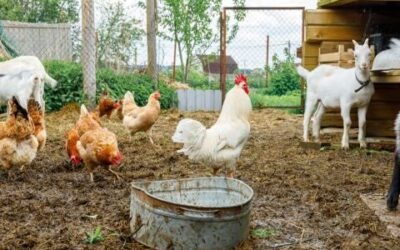For Pain and Performance, Owners Rely on Hands-on Treatment

Guthrie
Erin Smith knows when her 12-year old horse Guthrie is hurting. A former roping horse, Guthrie was the perfect horse for Smith, who wanted a calm, steady trail horse. But she found they were staying off the trails for months. Lame and coping with injuries, Guthrie was constantly on and off medication. He couldn’t turn his neck, he limped, at times fell, and eventually could walk no more than ten feet without a break. “I had pretty much resigned myself to the fact that he might not ever be ridden again on a regular basis,” Smith said.
She sought out Caitlin Daly DVM, at Mid Coast Equine in Waldoboro, Maine for equine spinal manipulation. While Smith had no luck with chiropractic treatments in the past, she was attracted to Dr. Daly’s process. “It was a more thoughtful and gentle way of releasing his tensions than what we had previously experienced,” she said. She noticed immediate results after her first session. “The next day Guthrie’s tail was down, and within two days it was centered. He was willing to move forward freely, and he felt very straight.” After the third session, Smith said he was like a completely different horse. “During one of our Friday night group rides he even jumped when I asked him to trot over poles,” she said. “That was something I never dreamed he’d be able to do.” His energy was level up, and yet he was calm and happy. “I was absolutely amazed,” she said.
Similar to chiropractic in humans, applied to animals, manipulative therapy is referred to as spinal manipulation or veterinary medical manipulation. Its goal is to restore normal function and range of motion, and involves a high velocity, low amplitude (HVLA) thrust directed in the plane of the joint to restore normal function and eliminate “restrictions.” Restrictions, areas of the spine or joint that are unable to move, can occur as the result of trauma, confinement, exercise, and age, and worsened by many different issues including poor saddle fit, for instance, or simply lack of conditioning. Commonly, restrictions are found in the TMJ, poll, lower neck and back and pelvis and sacrum. Therapy doesn’t require extreme strength, as is sometimes assumed – rather, proper knowledge of anatomy and specific training.
Toward Recovery
Dr. Daly opened Mid Coast Equine in 2013 and began serving clients by providing general health and wellness care – things like vaccines and dentistry – and treating common illnesses such as Cushing’s, Lyme, Coronavirus, and Laminitis. Treatments helped her patients, but something about the way they were responding still wasn’t right. A horse moved better after hock injections but still had a hard time standing for the farrier; a horse treated for Lyme disease was brighter but still looked uncomfortable even after using the best antibiotics. “I was improving the body condition of horses with proper dental care, parasite prevention and nutrition, but the topline [the muscles that support he spine] still remained underdeveloped,” Daly said.
As soon as she started taking classes for Equine Veterinary Medical Manipulation, or EVMM, training, her observations started to make sense. It’s not that the initial treatments were wasteful. Quite the contrary. Those treatments were doing the bulk of the work. But something else was needed, Daly realized, to get the horse the rest of the way to recovery. “The horse with topline issue had restrictions in his neck and back making him too uncomfortable to relax and engage the muscles needed for topline development,” she said. “The hock injection horse was restricted in his pelvis and hips making it difficult for him to stand and rotate for the farrier. The Lyme horse was restricted in almost every cervical vertebra moving around like he had a steel rod in his neck and he was restricted in his poll decreasing blood flow to his brain causing behavioral changes, and maybe even headaches.” This past November, Daly became a Certified Veterinary Medical Manipulation Practitioner (CVMMP).
Benefits for Pain & Performance
In Maine, as in most states, spinal manipulation of animals can only be performed by a medical professional with advanced training that is licensed either as a Doctor of Chiropractic or a Veterinarian. Veterinarians, Daly said, especially those with an equine focus, have a particular opportunity to provide a wide breadth of technical skills. They can detect subtle changes in animal mood, behavior, gait pattern, body conformation and muscling, all of which can be indications of discomfort. “I have not met a single horse that hasn’t had at least five restrictions,” she said. “This means that each and every horse is experiencing reduced range of motion within multiple joints in their body on a daily basis.”

Thor
In fact, only a small number of patients call Daly directly for “chiropractic” services. Most of the time her patients are those who have a horse with a problem that ends up having a solution found in spinal manipulation – everything from lameness, ulcers and behavioral changes. Chelsea Guptil’s horse, Thor, is eight and does a wide variety of light activities four days a week. Guptil called Mid Coast Equine when Thor began showing mild lameness and soreness and was crooked to ride. “He had a hard time picking up right lead canter, and his attitude had become poor,” said Guptil. She had a chiropractic visit a couple of years ago, but it wasn’t helpful. She didn’t know about EVMM, but she knew Thor needed help. “I definitely notice a difference,” she said. Thor has had about six visits. “He was in pain. Something was out of alignment, and now his muscles have learned to move differently.” Now when he rides crooked, she said, it’s out of habit, and he’s willing to take correction. “His movement is better, and his attitude is better, too,” she said.

Thor engages in some essential work.
Even performance horses in top shape but looking for an advantage can benefit. Dressage, jumpers, barrel racers, and any horse engaged in Western performance based in strength and mobility can experience restrictions that result in minor discomfort and can mean the horse is not working at peak performance, Daly said. Recently, a barrel racing patient of hers experienced a drop of a second off his time as the result of a spinal manipulation session because he was able to do his job more comfortably.
Looking & Listening

Guthrie relaxes comfortably by the barn.
For Erin Smith, the progress she has seen in Guthrie has been beyond her wildest dreams. They have been riding more in the last two months than in the last five years combined. Smith expects that Guthrie will need maintenance visits every few weeks – she allows that he is a “complicated case” that includes neck and back issues, not to mention those resulting from years of compensating for his injuries. But she is comforted by knowing that when pain flares, there is someone to call.
Daly said that a reliance on only vital signs, diagnostic images and lab parameters to treat our horse, often means not getting the full picture. She cites a patient that had been fussing with his bit, and because she had recently worked on the horse’s teeth, she suspected restriction in his TMJ or occiput, or the back of the head – the horse had both. It reaffirmed her belief that so many of the strange behaviors horses exhibit can be explained. “I strongly believe that if we listen close enough with our eyes, our patients will often tell us what’s wrong. But if we’re not looking, we’re not listening,” she said. “Practicing EVMM enables me to see a horse in a slightly different way.”




